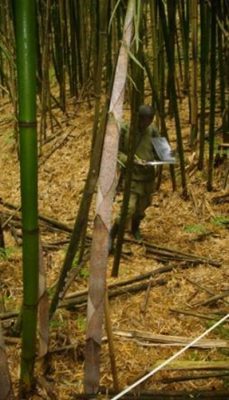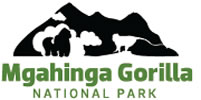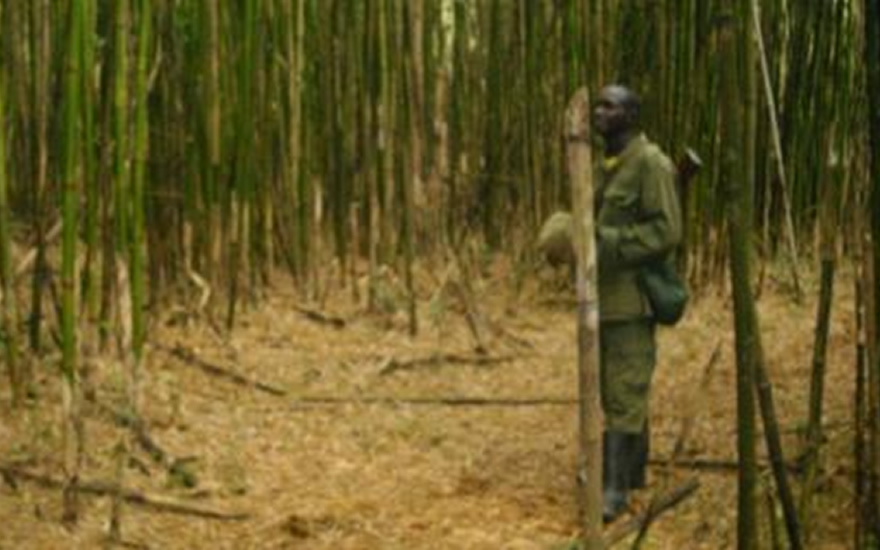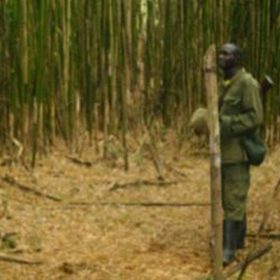Following the field training by Douglas and Miriam, Joseph and I (Fredrick) spent 2 weeks in Mgahinga Gorilla National Park leading two data collecting teams. The data will be used to answer the question “How does harvesting of bamboo stems impact its regeneration?” We are just back and wanted to give you an idea how a day in the field looked like.

Field work started as early as 8:00 am, when it is still pretty chilly at the altitude of Ntebeko (about 2500m). We assembled at the park’s main gate with the 4 rangers selected to carry out this survey. Led by one of the rangers, we headed straight up the volcanic slopes, into the forest via a trail along a high stone wall which prevents buffaloes and other large mammals from raiding neighbouring fields. On arrival, we always split into two teams of three; a Team leader, Secretary and Recorder. We used GPS and compass to locate sampling plots in a systematic grid of starting points along a line with predetermined coordinates. The transects were 25 m apart, which allowed the two teams to keep in touch and to discuss challenges encountered in the field.
In a strip of 1 meter wide along the transect, we enumerated and recorded 20 bamboo stems in different categories, namely shoots, young and green stems, mature stems, cut, broken and dead bamboo stems. We also recorded young bamboo shoots eaten by animals which include Golden monkeys and buffaloes.
Remnants of bamboo shoots eaten by animals in Mgahinga Gorilla National Park
In some areas of Mgahinga, bamboo is dominant and almost the only plant you encounter. But, in other areas, the bamboo is mixed with trees, making its distribution clumped. The former seemed to have thicker greener bamboo stems while the latter had thinner greyish stems. However, we did not observe striking differences between harvested and non-harvested areas except for the fact that we could easily see the cut stems in harvested areas. We recorded young shoots in both the harvested and non-harvested areas. These data will be subjected to statistical analysis so that we can better understand the effect of harvesting bamboo.
It is common to find dense and pure bamboo stands like this in Mgahinga Gorilla National Park. Ranger Adrama Francis in the foreground.
Just like in many other tropical forests, afternoon rains are common in Mgahinga. Therefore, we often had our day’s field work crowned with a heavy downpour. In spite of this, we managed to keep our field work going thanks to a hardworking and cooperative team. The trick was as simple as keeping everyone happy by sharing nice stories, jokes and some biscuits! Trust me, it worked perfectly well. At the end of the day, we all came out of the forest with a smile on our face, knowing that we had the ‘bamboo hard facts’ in our bags. Not a bad job at all, don’t you think so?
Coming back from field work; Standing Left to right: Barebwa Ismael, Ssali Fredrick, Mukasa Joseph and Halera George. Squatting is Allen Uwihoreye.
We now await the results of the analysis which will follow soon. We hope that this study will contribute to the sustainable utilisation of bamboo in Mgahinga.


